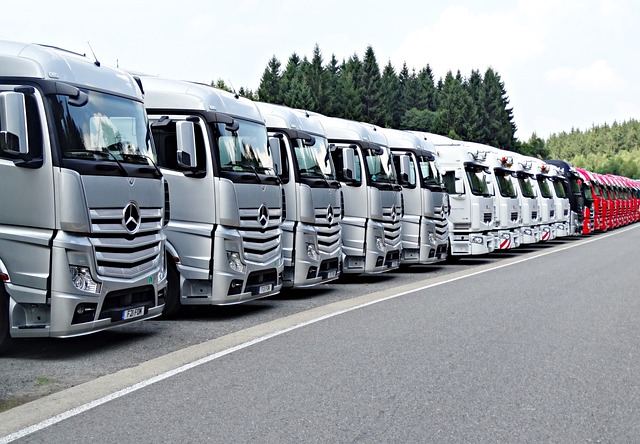Looking to register your car in California? Navigating the process can seem daunting, but with the right preparation, it’s a breeze. This guide breaks down the California car registration process step-by-step, focusing on key aspects like VIN verification. From ensuring you have all necessary documents to submitting your application and paying fees, we’ve got you covered. By following these straightforward steps, you’ll be cruising down the highway in no time with a valid car registration and plates.
- Understanding the California Car Registration Process
- Preparing for Vehicle Identification Number (VIN) Verification
- Gathering Necessary Documents
- Submitting Your Application and Paying Fees
- <a href="#receiving-your-registration-and-plate”>Receiving Your Registration and Plate<EOS_TOKEN>
Understanding the California Car Registration Process

Understanding the California Car Registration Process
In California, registering a car involves several key steps that ensure vehicle safety and compliance with state regulations. The process begins with gathering essential documents, including proof of ownership, insurance, and identification. Once these are in order, the next crucial step is the Vehicle Identification Number (VIN) verification. This involves using a mobile VIN verifier or conducting a mobile VIN inspection to confirm the vehicle’s authenticity and history, which is vital for preventing fraud and ensuring road safety.
After successful VIN verification, you can proceed with visiting a California Department of Motor Vehicles (DMV) office or using their online services to register your vehicle. This includes submitting the necessary forms, paying the registration fees, and providing additional details about the vehicle’s emissions compliance. Proper navigation through these steps ensures that your car is legally registered, which is not only essential for daily driving but also important for maintaining the vehicle’s title and insurance coverage.
Preparing for Vehicle Identification Number (VIN) Verification

Before you begin the registration process, it’s crucial to prepare for the Vehicle Identification Number (VIN) verification, a key step in ensuring your vehicle’s authenticity and compliance with California regulations. The VIN is a unique code that serves as a fingerprint for your car, making it essential during the registration and insurance claims processes. You’ll need to have this number readily available, typically found on the vehicle’s certificate of title or located under the windshield on most models.
For added convenience and efficiency, consider opting for a mobile VIN verification service, offering a quick and seamless experience. This alternative to traditional vin inspection allows you to complete this requirement from the comfort of your home or workplace, saving time and effort while ensuring compliance with California’s vehicle registration standards.
Gathering Necessary Documents

Before you begin the registration process, it’s crucial to gather all the essential documents required by the California Department of Motor Vehicles (DMV). This includes your vehicle’s registration certificate from the previous state, a valid driver’s license, proof of insurance, and perhaps most importantly, your Vehicle Identification Number (VIN) verification. A mobile VIN verification or inspection can be a convenient way to ensure your vehicle’s history is clean and accurate.
This step is vital as the DMV will use your VIN to check for any outstanding issues like theft, accidents, or outstanding fines. Having all these documents ready allows for a smoother registration process, so take the time to organize them before visiting your local DMV office or completing the online registration.
Submitting Your Application and Paying Fees

After completing your vehicle’s registration application, it’s time to submit it along with the required documents and fees. The California Department of Motor Vehicles (DMV) will review your application and perform a vin inspection to ensure the vehicle’s identification number (VIN) is valid and matches the details provided. This process verifies the vehicle’s history, including any previous accidents or outstanding issues, ensuring that the car meets safety standards.
The fees involved in registering your vehicle include a base registration fee and potentially additional charges, depending on factors like the age of your car and if you choose optional services. You can pay these fees online, by mail, or in person at a DMV field office. If you opt for a mobile vin inspection, which allows the verification process to be completed at your location, there might be an additional fee applied. This convenient service saves time by bringing the DMV to your doorstep.
<section id="receiving-your-registration-and-plate”>
Receiving Your Registration and Plate<EOS_TOKEN>

After successfully completing the registration process with the DMV, you’ll receive your vehicle’s registration documents and license plates. This is a crucial step in ensuring your car is legally registered and identified on California roads. The registration package typically includes important information like your vehicle’s unique Vehicle Identification Number (VIN), which undergoes a rigorous vin verification process to confirm its authenticity.
Receiving your license plates involves a simple installation process, where you attach them to the designated areas of your vehicle. It’s recommended to conduct a vin inspection yourself or consider using mobile vin verification services for added convenience and peace of mind. This ensures that all details match and your car is compliant with California’s registration standards.
Registering a car in California involves several steps, from VIN verification to gathering essential documents. After submitting your application and paying the required fees, you’ll receive your vehicle’s registration and license plate. Understanding each phase of the process is key to ensuring a smooth transition into becoming a California driver with a legally registered vehicle.



